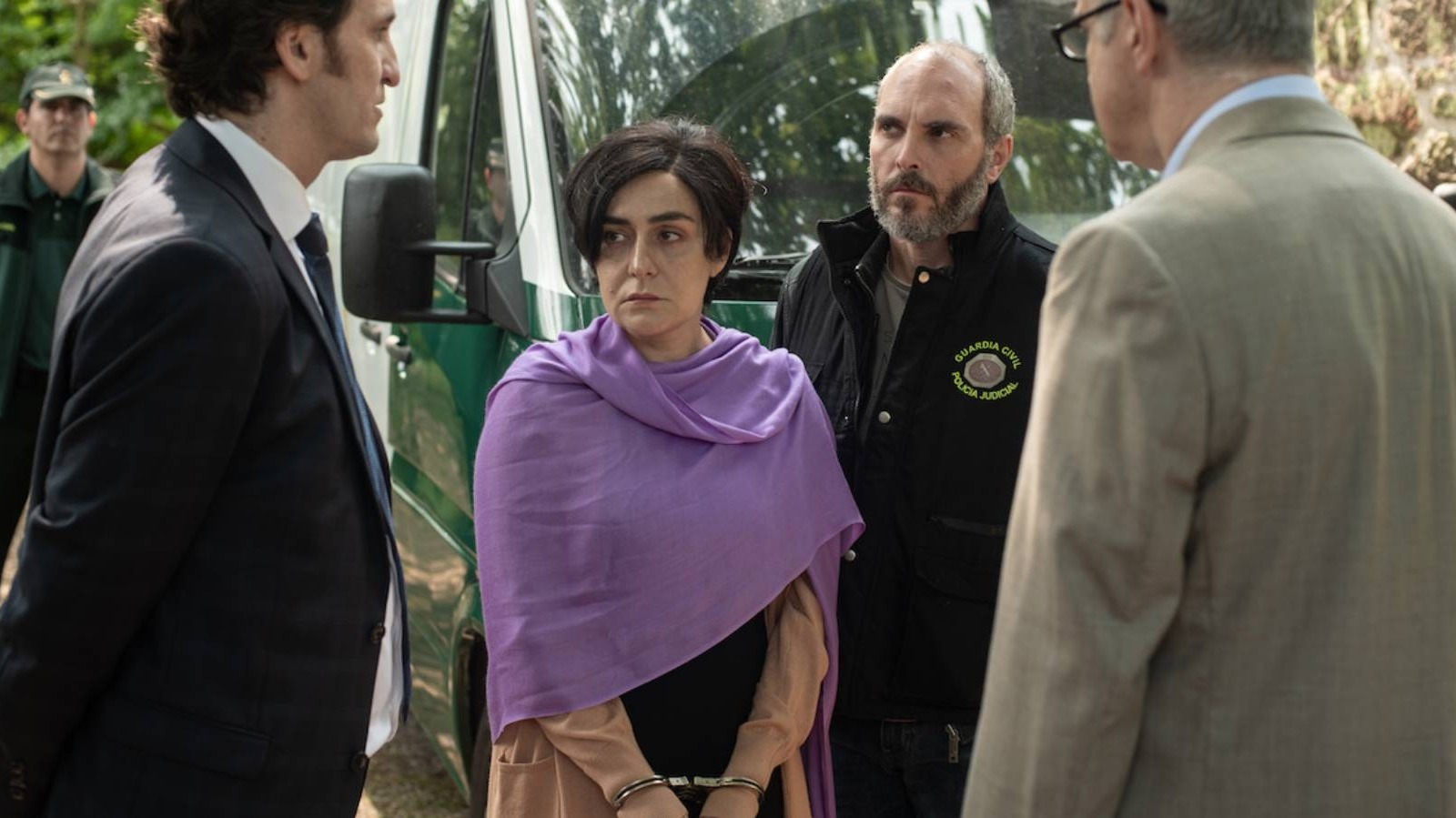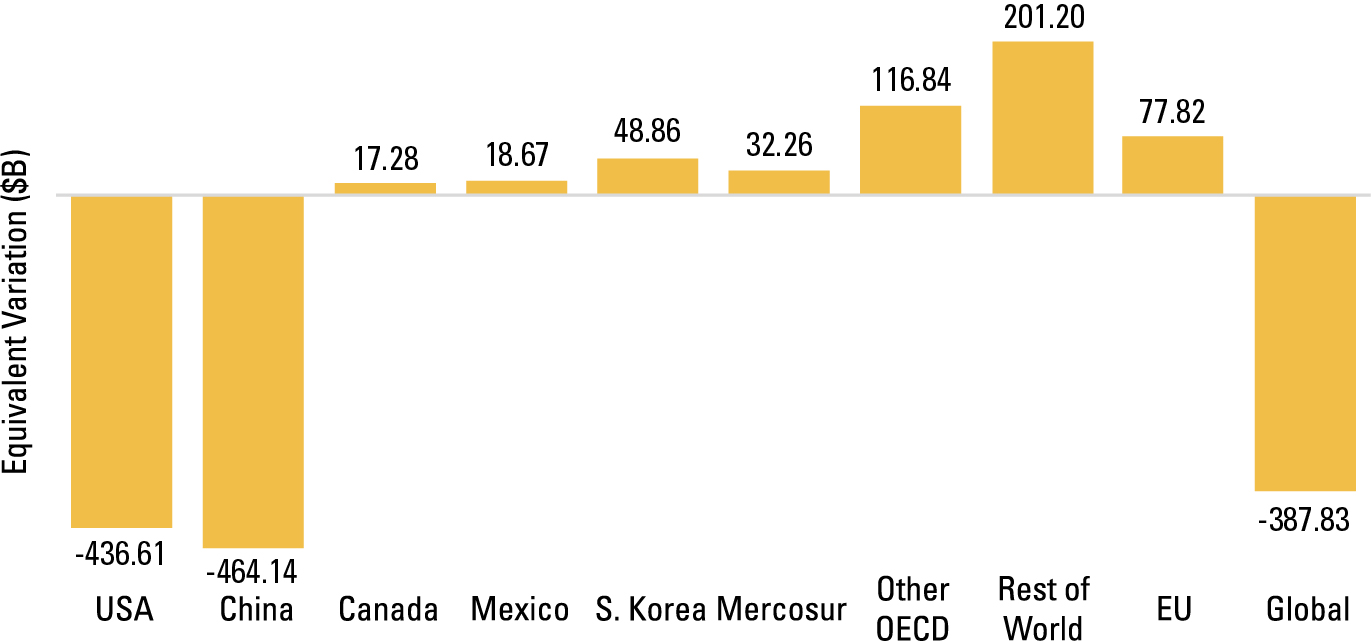Netflix Missing: The American Manhunt For Osama Bin Laden

Table of Contents
The Genesis of the Manhunt: The 9/11 Attacks and Their Aftermath
The September 11th, 2001, terrorist attacks served as the catalyst for the global manhunt for Osama bin Laden. The immediate aftermath was one of shock, grief, and a fierce determination to bring the perpetrators to justice. The attacks galvanized the United States into launching a "War on Terror," dramatically shifting the nation's foreign policy focus and leading to increased military engagements in Afghanistan and beyond. The CIA's Counterterrorism Center, already active, significantly expanded its operations, becoming a central hub for intelligence gathering and operational planning. The early stages of tracking bin Laden proved incredibly challenging. Afghanistan's rugged terrain and the decentralized nature of al-Qaeda provided ample cover for the elusive terrorist leader.
- Increased US military presence in Afghanistan, coupled with support for the Northern Alliance, aimed to destabilize al-Qaeda's foothold.
- The initial challenges of locating bin Laden within Afghanistan’s complex tribal structures and mountainous regions significantly hampered progress.
- The establishment of the CIA's Special Activities Division played a crucial role in covert operations and intelligence gathering throughout the manhunt.
Key Players and Their Roles in the Osama Bin Laden Manhunt
The Osama bin Laden manhunt involved a complex web of key players, each contributing their unique expertise. CIA operatives, military personnel (including specialized units like SEAL Team Six), intelligence analysts, and political leaders (such as President George W. Bush, Leon Panetta, and Robert Gates) all played crucial, often overlapping roles. The diverse skillsets required ranged from sophisticated intelligence analysis and signals intelligence (SIGINT) to human intelligence (HUMINT) gathering and tactical combat expertise. Collaboration between different agencies was essential, though not always seamless, often marked by inter-agency friction and competing priorities.
- Profiles of key individuals involved highlight the diverse backgrounds and crucial contributions. For instance, Leon Panetta’s leadership as CIA Director was instrumental, and Robert Gates’ role as Secretary of Defense shaped the military's involvement.
- Intelligence analysts painstakingly pieced together fragmented information from various sources, using innovative techniques to identify patterns and locate Bin Laden. The analysis of intercepted communications and financial transactions were vital elements.
- The role of HUMINT, often relying on informants and undercover operations, proved particularly valuable in tracking Bin Laden's movements, supplementing the technical capabilities of SIGINT.
The Evolution of the Manhunt: Strategies and Setbacks
The strategies employed in the Osama bin Laden manhunt evolved significantly over the years. Initial efforts focused on large-scale military operations and efforts to dismantle al-Qaeda’s infrastructure in Afghanistan. However, as the search progressed, the focus shifted toward more targeted approaches, including the increased use of drone strikes and covert operations. These shifts were driven by both successes and setbacks, reflecting a constant adaptation to changing circumstances and intelligence. Political complexities and international relations added layers of difficulty, requiring careful diplomacy and strategic partnerships.
- The use of drone strikes, while proving effective in eliminating key al-Qaeda figures, also raised significant ethical concerns regarding civilian casualties and potential for unintended consequences.
- The role of Pakistan and its intelligence services in the hunt is a particularly sensitive and complex aspect. While Pakistan officially cooperated in the fight against terrorism, suspicions regarding its level of complicity in harboring Bin Laden lingered.
- Maintaining secrecy was paramount. Leaks to the media could compromise operations and endanger operatives, presenting a constant challenge for those involved in the manhunt.
The Abbottabad Raid: The Final Assault and its Aftermath
The raid on the Abbottabad compound in Pakistan in May 2011 marked the culmination of the decade-long manhunt. SEAL Team Six, a highly trained US Navy special warfare unit, executed the operation with precision and secrecy. The planning and execution involved meticulous intelligence gathering, advanced reconnaissance, and flawless coordination among different teams and agencies. The immediate aftermath saw celebrations in the United States, but also raised questions about Pakistan's intelligence failures and the potential for international repercussions.
- The use of SEAL Team Six and their specialized training and experience was critical to the success of the operation. Their expertise in close-quarters combat and high-risk scenarios proved indispensable.
- The complexities of the operation included navigating the potential risks of civilian casualties, dealing with unexpected challenges on the ground, and ensuring the safe extraction of the SEAL team.
- The political fallout following the raid was considerable, impacting US-Pakistan relations and sparking debates about the legality and ethics of the operation.
The Legacy of the Osama Bin Laden Manhunt: Lessons Learned and Long-Term Implications
The successful conclusion of the Osama bin Laden manhunt had a lasting impact on counterterrorism strategies, prompting significant shifts in approach. The ethical implications of drone warfare remain a contentious issue, sparking intense debate over the balance between effectiveness and the risk of civilian casualties. The legacy of the operation continues to shape US foreign policy and the global fight against terrorism.
- Changes in counterterrorism approaches after Bin Laden’s death reflect a renewed focus on targeted operations and intelligence gathering, coupled with a continuing effort to address the underlying causes of radicalization.
- The ongoing debate about targeted killings and civilian casualties remains central to the discussion of ethical considerations in modern warfare.
- The impact on the global fight against terrorism is multifaceted, with ongoing efforts to counter the evolving threat posed by extremist groups.
Conclusion
Netflix's "Missing" provides a gripping and insightful account of the complex and often brutal Osama bin Laden manhunt. Understanding this pivotal event is crucial for comprehending the ongoing fight against terrorism and the challenges of modern counterterrorism strategies. The manhunt highlights the dedication, sacrifices, and ethical dilemmas inherent in this type of global operation. Learn more about the intricacies of the Osama bin Laden manhunt by watching Netflix's "Missing" and further researching the historical events surrounding this significant chapter in global history. Understanding the strategies, setbacks, and ultimate success of this operation is essential for comprehending the continuing challenges of global security.

Featured Posts
-
 Netherlands Majority Opposes Eus Response To Trump Import Tariffs
May 18, 2025
Netherlands Majority Opposes Eus Response To Trump Import Tariffs
May 18, 2025 -
 2 2011
May 18, 2025
2 2011
May 18, 2025 -
 Reddit Down Thousands Of Users Worldwide Affected
May 18, 2025
Reddit Down Thousands Of Users Worldwide Affected
May 18, 2025 -
 Delayed True Crime Series Overtakes High Rated Netflix Romance Drama
May 18, 2025
Delayed True Crime Series Overtakes High Rated Netflix Romance Drama
May 18, 2025 -
 Damiano Davids Next Summer A Deep Dive Into The Maneskin Vocalists Solo Work
May 18, 2025
Damiano Davids Next Summer A Deep Dive Into The Maneskin Vocalists Solo Work
May 18, 2025
Latest Posts
-
 The Netherlands Public Opinion Against Eu Trade War With Us Over Tariffs
May 18, 2025
The Netherlands Public Opinion Against Eu Trade War With Us Over Tariffs
May 18, 2025 -
 Analysis Why Most Dutch Oppose Eu Retaliation Against Trumps Tariffs
May 18, 2025
Analysis Why Most Dutch Oppose Eu Retaliation Against Trumps Tariffs
May 18, 2025 -
 Dutch Public Favors Avoiding Trade War Escalation With Us Over Tariffs
May 18, 2025
Dutch Public Favors Avoiding Trade War Escalation With Us Over Tariffs
May 18, 2025 -
 Poll Reveals Dutch Resistance To Eus Retaliatory Tariffs Against Us
May 18, 2025
Poll Reveals Dutch Resistance To Eus Retaliatory Tariffs Against Us
May 18, 2025 -
 Netherlands Majority Opposes Eus Response To Trump Import Tariffs
May 18, 2025
Netherlands Majority Opposes Eus Response To Trump Import Tariffs
May 18, 2025
